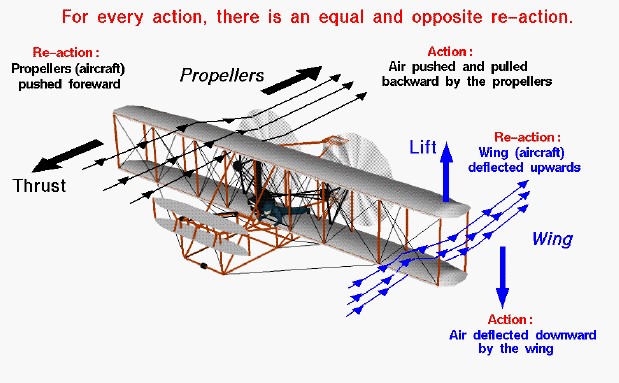Newton’s Third Law – Action & Reaction

Newton’s Third Law: Action & Reaction
Sir Isaac Newton first presented his three laws of motion in the “Principia Mathematica Philosophiae Naturalis” in 1686. His third law states that for every action (force) in nature there is an equal and opposite reaction. In other words, if object A exerts a force on object B, then object B also exerts an equal and opposite force on object A. Notice that the forces are exerted on different objects.
Wright 1903 Flyer
Powered aircraft are an excellent example of the application of the third law of motion. Both the lift and thrust of the Wright 1903 Flyer can be explained by the third law. Considering the generation of lift by the wing of the aircraft, the air moving past the wing is deflected downward by the shape and the motion of the wing. The wing exerts a force, or action, on the air and in re-action the wing is pushed upward by the air. The 1903 flyer used twin propellers attached to a small motor to generate thrust. The propellers accelerate a large mass of air by a small amount across the propeller disk. The propellers exert a force (action) on the mass of air and push the air to the rear of the aircraft. In re-action, the propellers are pushed forward by the air. Since the propellers are attached to the aircraft, the entire aircraft is pushed forward by the action of the propellers.
